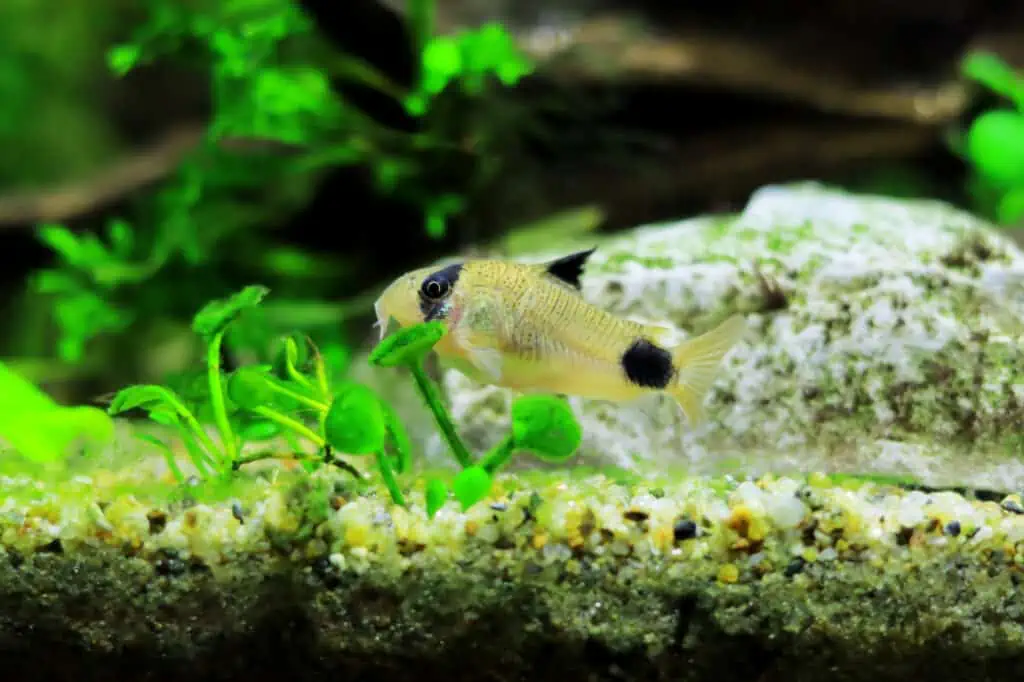Algae is a major bugbear for most aquarium owners, and many people like to assemble an aquatic cleaning crew to graze on the algae and keep it under control.
Corydoras catfish are hardy, peaceful, easy to care for, and full of personality, which makes them ideal for a beginner’s tropical community tank.
But do Cory cats eat algae, and could these little guys be valuable members of your fish tank cleaning party?
Read this guide to learn more!
Do Cory Catfish Eat Algae?
If you want to add an algae eater to your fish tank, you’ll need to look elsewhere!
Corydoras catfish do not eat much algae.
Although you might see your Cory catfish nibbling on the algae they find growing on rocks, wood, and the substrate, the green stuff doesn’t make up a large part of a Cory’s diet.
What Do Corydoras Eat?
Cory catfish are omnivores, eating a diet of meaty proteins, plant matter, algae, and general detritus. These little guys are typical catfish in that they spend much of their time rooting around in the substrate, looking for scraps to eat.
That can lead to problems, as many inexperienced fish keepers sometimes assume that their fish are getting plenty to eat when in fact, the Corys might be starving.
So, it’s vital that you provide your Corys with plenty of the correct foods to eat.
Fish Food
Corydoras catfish should be fed a basic, daily staple diet of high-quality fish flakes or sinking pellets.
I had a few issues in my tank because the fish living in the upper areas of the water column would eat most of the food before it reached the Corys.
So, be sure to observe your Cory catfish and ensure enough food is sinking down to the bottom of the tank, where they can grab it.
Frozen Food
Cory catfish enjoy the addition of meaty protein to their diet in the form of bloodworms, daphnia, krill, and brine shrimp. The easiest way to include that in your fish’s diet is to use frozen food.
Frozen food is readily available in most good pet and fish stores, and it’s easy to store.
Most frozen foods come in blister packs, so all you need to do is break open a cube of food, thaw it in a little bit of tank water, and then feed it to your Cory catfish.
Algae Wafers
Corys will eat algae wafers as part of their diet. Wafers are designed to sink to the bottom of the tank, where your bottom dwellers can easily get to it.
Although algae wafers shouldn’t form the main part of your Corys’ diet, they do make a useful addition to it.
Live Foods
In the wild environment, Corys eat insect larvae, small crustaceans, worms, and general detritus, as well as some plant matter and algae.
Although you could feed your Corys some live food, we recommend against that. Live food often contains parasites and bacteria that could make your fish sick.
You should never take live foods from your local river or pond. Again, the food could contain parasites and might be contaminated with harmful chemicals that you definitely don’t want in your aquarium.
Algae-eater Options
If you want to invest in some types of fish and other livestock that will help keep your aquarium clear of algae, there are several other creatures to consider.
These fish and invertebrates love to spend their days grazing on different kinds of algae, eating detritus and leftover fish food, and helping to keep your fish tank clean and tidy.
Bristlenose Pleco (Ancistrus cirrhosis)
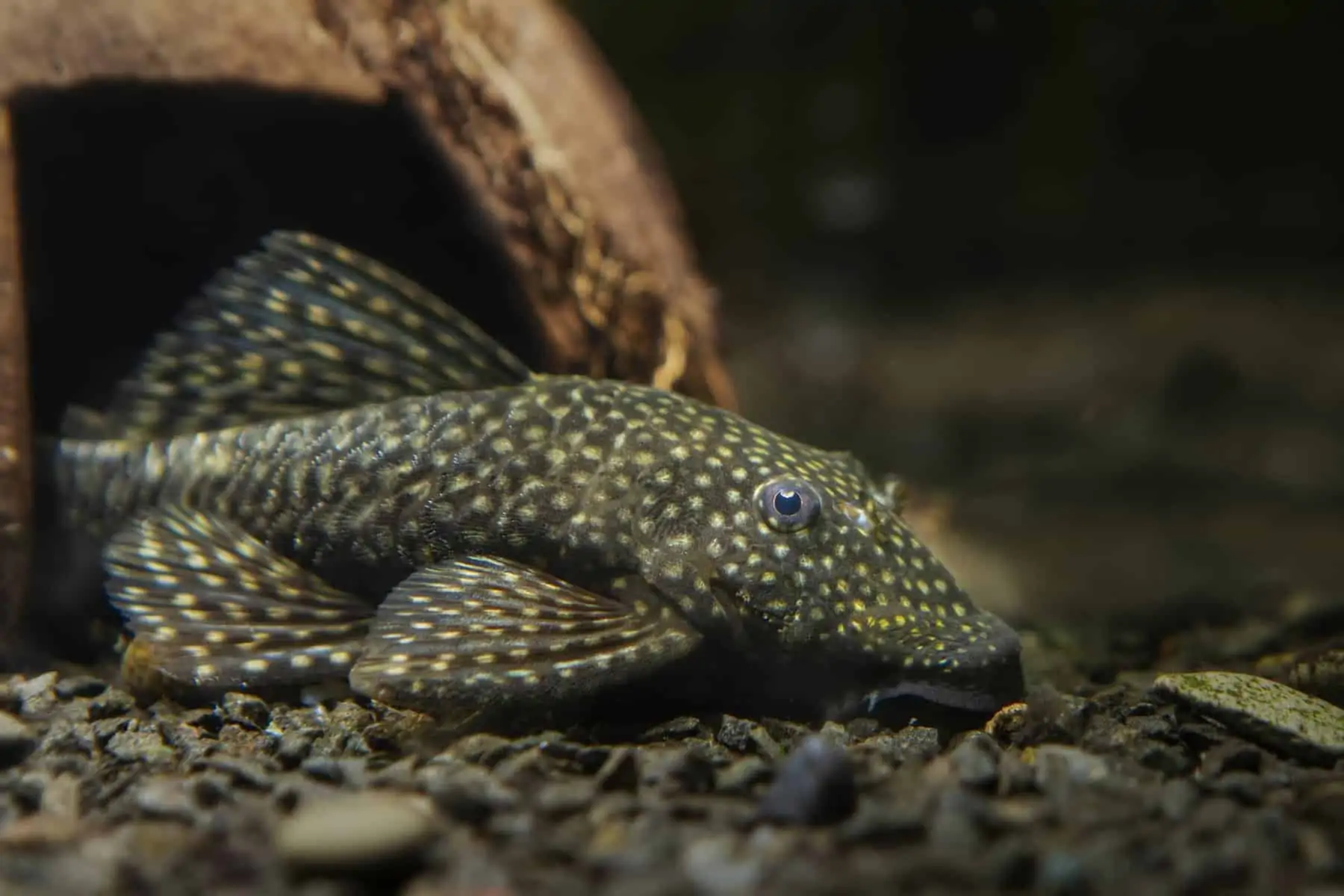
The Bristlenose pleco is a popular bottom-dwelling fish that makes a great algae eater and are a firm favorite with many aquarists.
These plecos are quite small, growing to reach around 5 inches in length. They enjoy veggies and algae, but they also eat meaty foods, fitting in well with most other tropical fish in a community tank.
Bristlenose plecos are easy to care for and get along well with all species of Cory catfish, but you’ll need at least a 20-gallon aquarium to keep them.
Otocinclus Catfish (Macrotocinclus affinis)
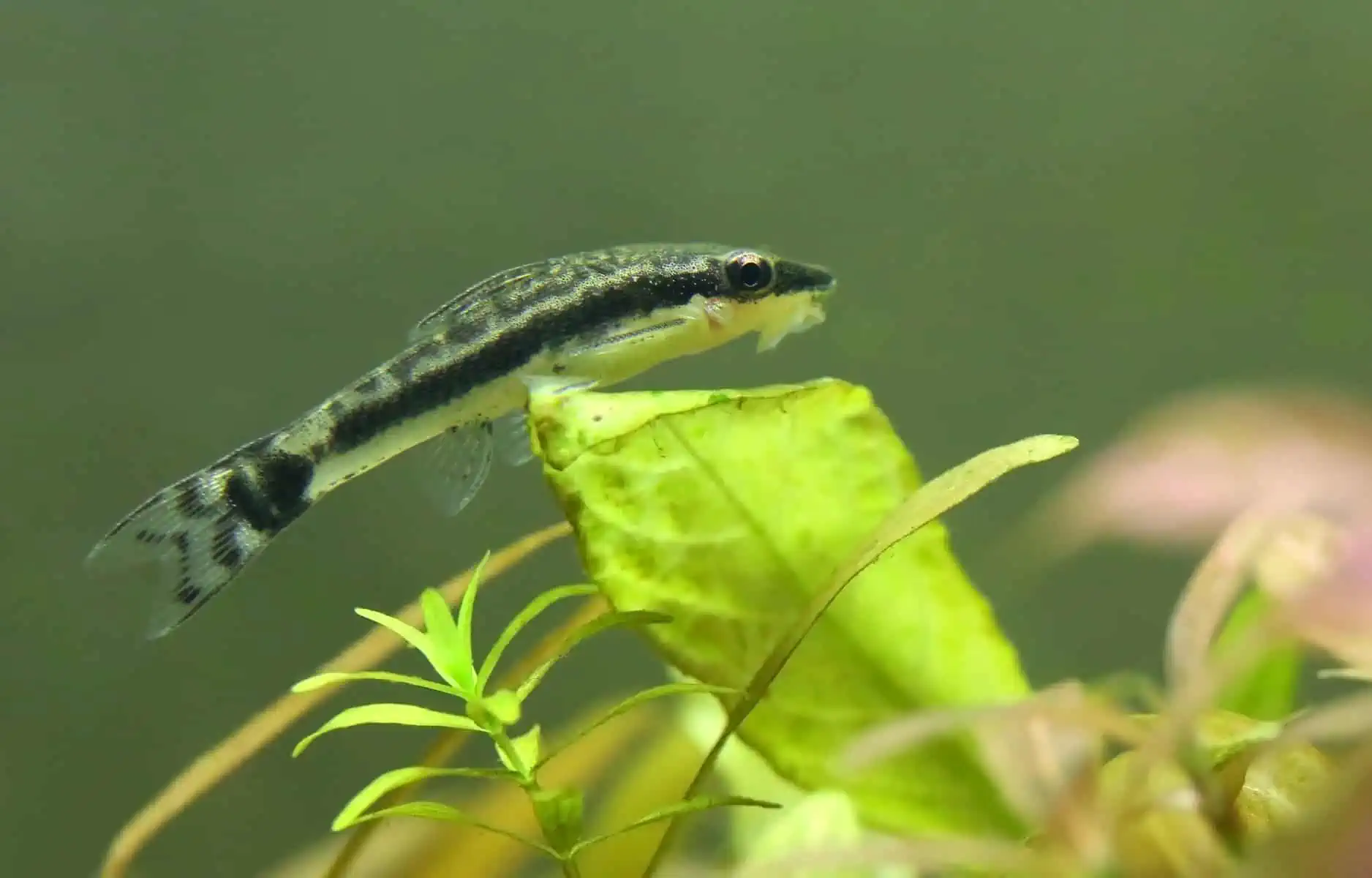
Otocinclus catfish are algae-eating specialists, munching through remarkable amounts of the stuff every day. In fact, unsightly brown algae is a particular favorite of these neat little fish.
Although these peaceful fish are sensitive to unstable water parameters, they are relatively easy to keep and would do well in a community tank with Corys.
Otos grow to a length of around only two inches, but they need a tank size of at least 20 gallons.
Cherry Shrimp (Neocaridina davidi)
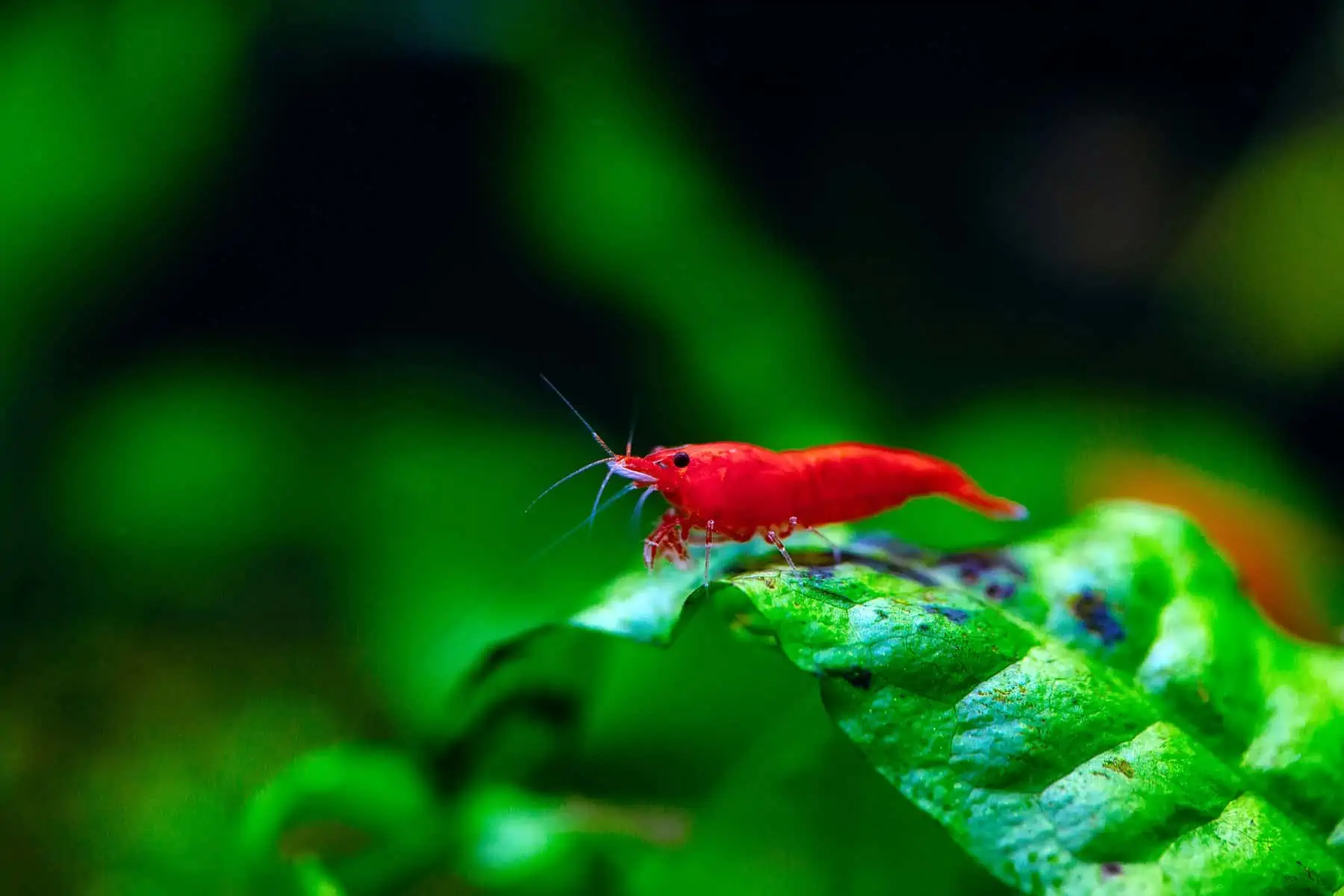
Cherry shrimp are pretty little shrimp that are a great choice for a small tank with an algae problem.
These beautiful invertebrates are fascinating to watch and easy to keep, and they’re prolific breeders, too. If you end up with too many shrimp, your local fish store will probably buy them from you.
However, if you have large fish in your collection, they will most likely keep shrimp numbers in check by eating many of the shrimplets.
Although at just 1.5 inches long, these shrimp make a great addition to a community tank; they can be vulnerable to predation from large fish. That said, if you have a 5-gallon tank, these little guys are definitely worth considering.
Freshwater Aquatic Snails
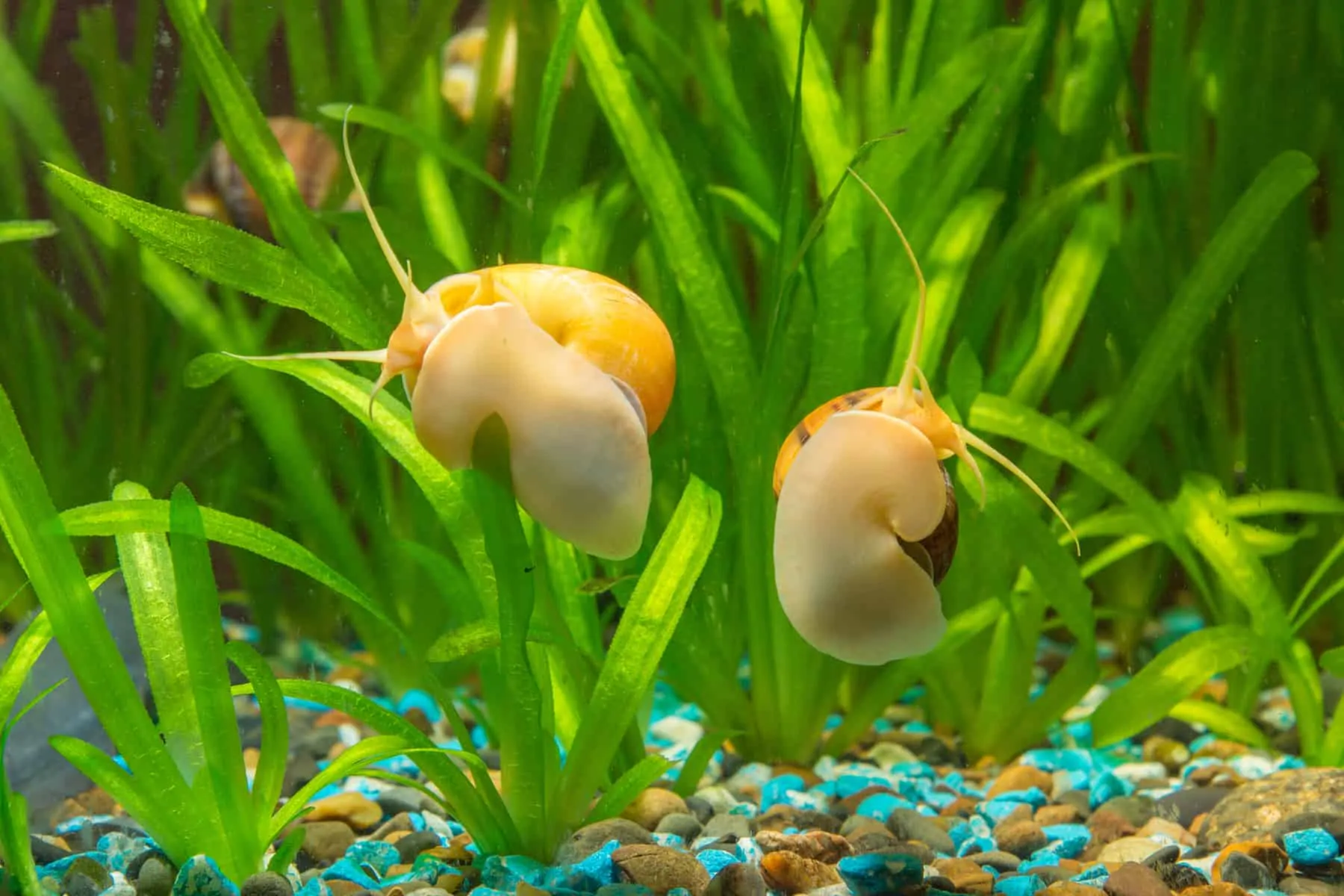
There are lots of freshwater aquatic snails that can make an excellent addition to any cleaning crew and get along fine with Corydoras. You can choose from large Mystery snails to tiny trumpet snails and anything in between.
Snails are peaceful animals that happily while away their time, grazing on detritus, dead plant material, uneaten fish food, algae, and even dead fish, keeping your entire tank clean and tidy.
Snails produce a very small bioload, too, so you can add a few to your tank without worrying that your filter will become overloaded.
However, a few snails are carnivorous and won’t be at all interested in algae. Assassin snails are a good example of that and do tend to prey on other snails, so are best avoided.
Flying Fox Fish (Epalzeorhynchos kalopterus)
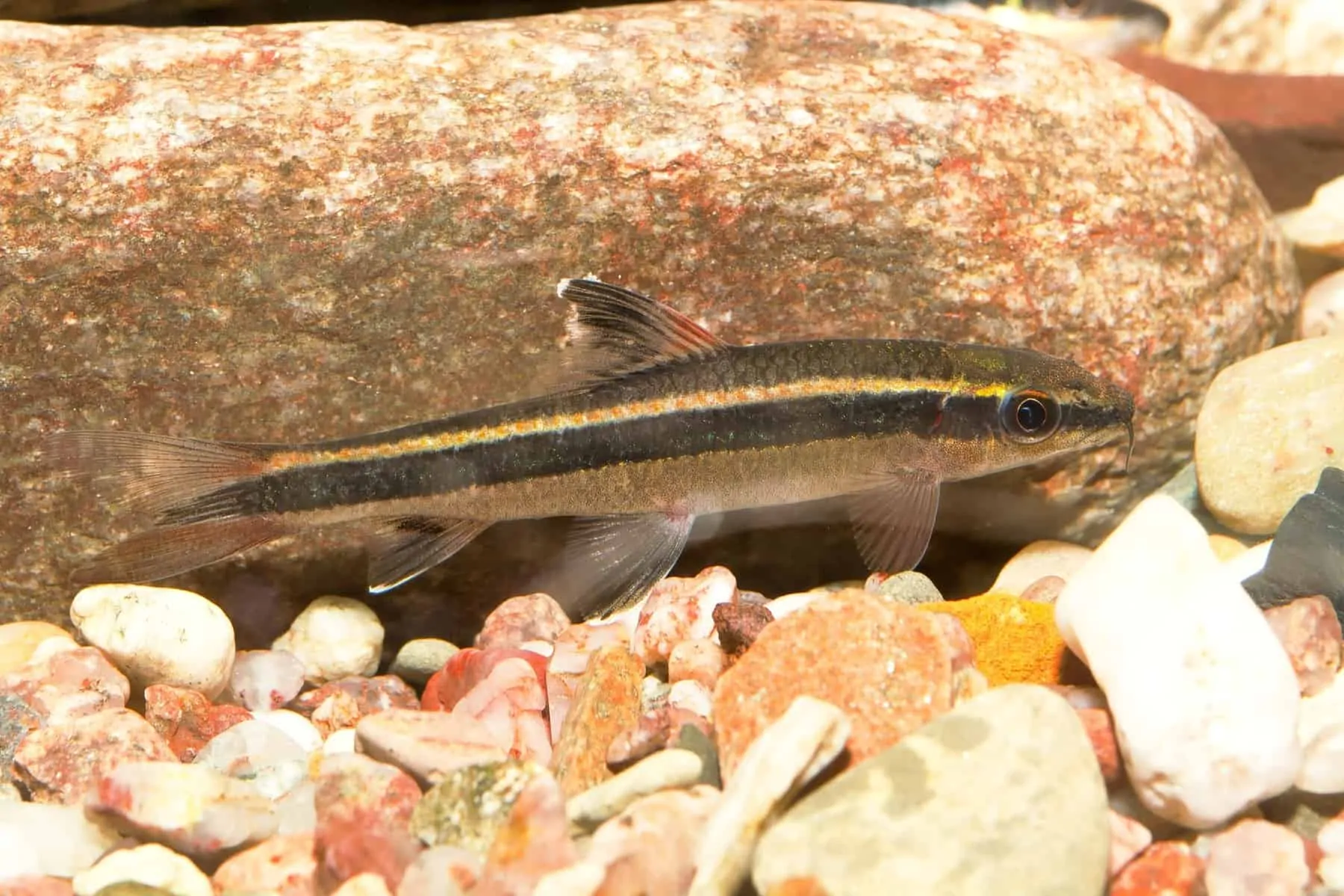
Flying Fox fish are sometimes confused with Siamese Algae Eaters, although the two are not the same species.
In case you were wondering, Siamese Algae Eaters are highly territorial bottom dwellers that don’t get along with Cory catfish, which is why we haven’t featured them in this guide.
However, Flying Foxes are peaceful creatures that are very fond of green algae and will help to keep your tank clean.
These fish can grow to reach between 4 and 6 inches long, so you’ll need a tank of at least 40 gallons for them to be comfortable.
Florida Flag Fish (Jordanella floridae)
The Florida Flag fish makes an attractive addition to a community tank and can be a reliable algae eater. These fish are especially suited to living in cooler water, making them a good addition to a non-heated tank.
Few species will entertain eating Black Bush algae, but the Florida Flag fish will happily munch on it. Although these fish are easy to care for and get along fine in an aquarium with Corys, they can damage delicate plants while foraging for algae.
The Florida Flag fish doesn’t grow much larger than 2 inches long, but you’ll need a 20-gallon tank size to keep a pair of these beauties.
Twig Catfish (Farlowella acus)

The Twig catfish is a weird-looking fish that loves to eat algae and will do well in a peaceful community tank with Corydoras.
These catfish can grow up to 7 inches long and need a tank of at least 35 to 40 gallons to be happy.
However, Twig catfish are very hardy fish that can adapt to a good range of water parameters, making them an excellent choice of algae eater for both beginners and experienced fish keepers.
Final Thoughts
I hope you enjoyed our guide to whether Corydoras eat algae. If you loved the article, please take a moment to share it before you go!
Cory catfish are omnivorous bottom-dwellers that will eat a small quantity of algae.
However, if your entire tank is overrun with green, brown slimy stuff, you’ll need to recruit a professional cleaning crew of snails, shrimp, Bristlenose plecos, Florida Flag fish, and Otocincus!
What algae-eating creatures do you have in your tank? Tell us in the comments box below.

